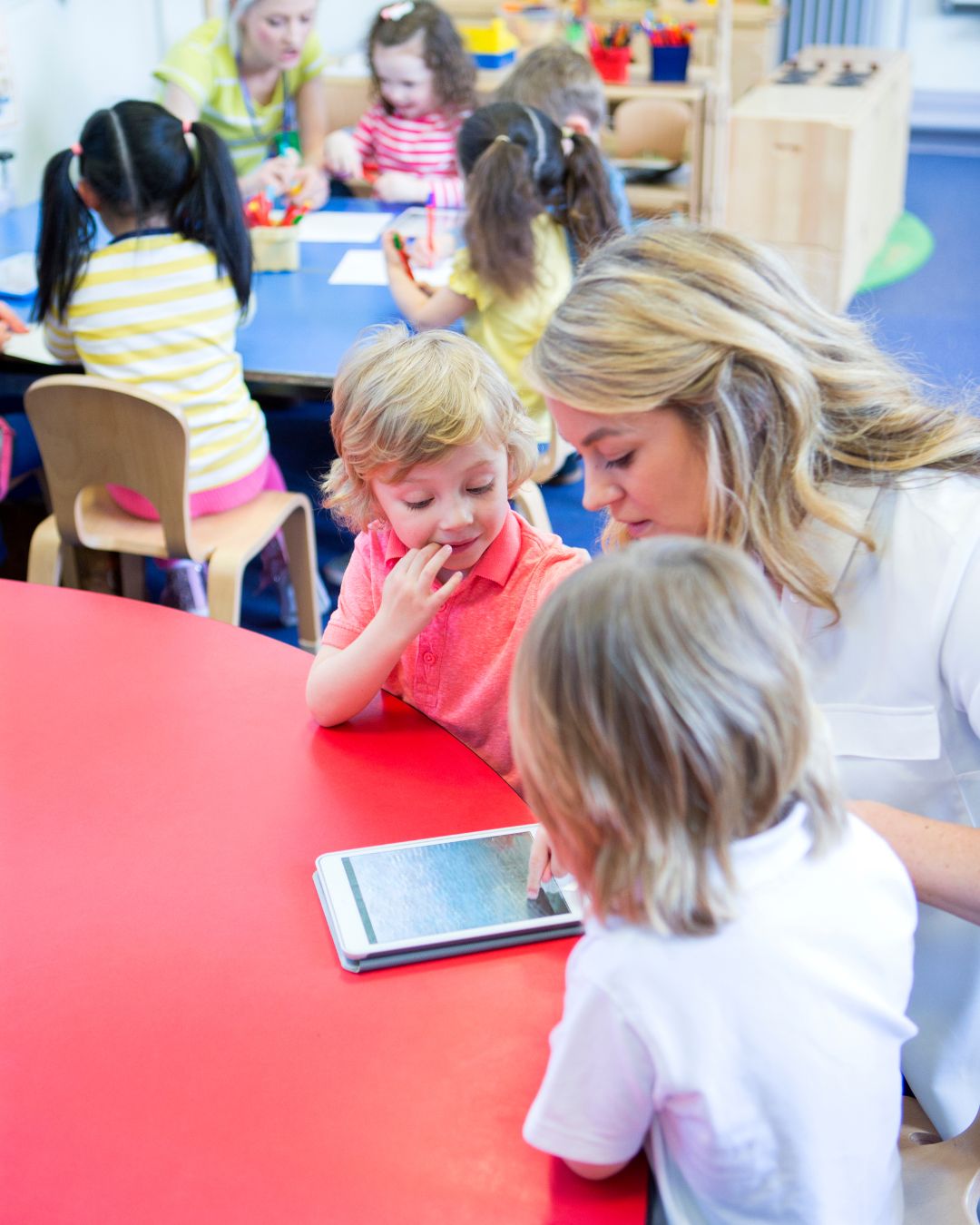

The importance of integrating technology in education cannot be understated. It allows for more interactive and engaging learning experiences, making it easier for students to grasp complex concepts. Get access to more information see below. Without technology, students may struggle to stay engaged and motivated in the classroom.
By incorporating technology into lessons, teachers can cater to different learning styles and abilities. This means that all students have the opportunity to succeed, regardless of their individual strengths and weaknesses. Without technology, some students may be left behind or feel disengaged from the material being taught.
Furthermore, technology provides access to a wealth of resources that would otherwise be inaccessible. The internet is a vast repository of information that can enhance and enrich lesson plans. Without technology, students would not have access to these resources and may miss out on valuable learning opportunities.
In conclusion, the integration of technology in education is crucial for creating a dynamic and effective learning environment. Without it, students may struggle to stay engaged, teachers may find it difficult to cater to different learning styles, and valuable resources may go untapped. Therefore, embracing educational technology is essential for ensuring student success.
When it comes to educational technology, there are so many different tools and resources out there that can really help enhance the learning experience. From interactive whiteboards to online learning platforms, the possibilities are endless! One example of a great tool is Kahoot!, which allows teachers to create fun quizzes and games for their students to play in class. Another useful resource is Google Classroom, which makes it easy for teachers to assign homework, share resources, and communicate with students all in one place.
With all of these amazing options available, it's hard to imagine not incorporating some form of technology into the classroom. Teachers can really take advantage of these tools to engage students in new and exciting ways. And let's be honest - who wouldn't want to make learning more fun and interactive?
So next time you're thinking about how to spice up your lessons, don't forget about all of the incredible educational technology tools and resources that are at your fingertips. Trust me, your students will thank you for it!
In the United States, public college teachers spend approximately $479 expense each year on classroom products, highlighting financing spaces.
Internationally, over 260 million children and young people ran out college as of 2018, highlighting persistent obstacles in worldwide education and learning gain access to.
Montessori education and learning, which emphasizes self-reliance and freedom within limitations, has actually been taken on in over 20,000 institutions worldwide, including 5,000 in the united state alone.
The global pupil market is valued at over $300 billion every year, demonstrating the substantial economic impact of worldwide education exchanges.
Hey there!. So, let's talk about transforming your future with quality education opportunities.

Posted by on 2024-05-02
As we look ahead to the future, it's clear that technology will continue to have a profound impact on education.. From virtual reality to artificial intelligence, there are countless innovations that will shape the way students learn and teachers teach.
One major trend in educational technology is personalized learning.

Posted by on 2024-05-02
Parental involvement in early childhood education initiatives is so crucial!. It can have a huge impact on a child's development and success later in life.

Posted by on 2024-05-02
When it comes to promoting diversity and inclusion in schools, evaluating progress and making adjustments is key to ensuring continued commitment.. It's important that we constantly assess how we are doing and take steps to improve if needed.

Posted by on 2024-05-02
Technology in the classroom has many benefits that can greatly enhance the learning experience for students. It allows for more interactive and engaging lessons, making it easier for teachers to keep students interested and focused on the material being presented. Teachers can use a variety of tools such as educational apps, online resources, and multimedia presentations to supplement their lessons and provide additional support for students who may be struggling.
One of the biggest advantages of using technology in the classroom is that it allows for more personalized learning experiences. With access to online resources and digital tools, students can work at their own pace and receive immediate feedback on their progress. This can help students develop a deeper understanding of the material and improve their overall academic performance.
Additionally, technology in the classroom can help prepare students for success in a digital world. By incorporating technology into their daily lessons, teachers can help students develop important skills such as critical thinking, problem-solving, and digital literacy. These skills are essential for success in today's job market and can give students a competitive edge when they enter the workforce.
Furthermore, technology in the classroom can help bridge gaps in education by providing access to information and resources that may not be readily available through traditional means. For example, students in remote or underserved areas may have limited access to quality educational materials, but with technology, they can connect with teachers and peers from around the world.
In conclusion, using technology in the classroom offers numerous benefits that can enhance the learning experience for students. By incorporating digital tools into their lessons, teachers can create more engaging lessons tailored to individual student needs. Additionally, technology helps prepare students for success in a digital world by developing important skills that are essential for future success.


Implementing educational technology can be a tricky task, with many challenges and considerations to keep in mind. From lack of training to resistance from teachers, there are numerous hurdles that must be overcome in order to successfully integrate technology into the classroom.
One major challenge is the cost associated with implementing new technology. Many schools simply do not have the budget to purchase the latest gadgets and software, making it difficult to stay up-to-date with the ever-changing world of educational technology. Additionally, some teachers may be hesitant to embrace new technology, fearing that it will replace traditional teaching methods or make their jobs more difficult.
Another consideration is the need for proper training and support for both teachers and students. Without adequate training, even the most advanced technology can go unused or underutilized in the classroom. Teachers must also be given time to familiarize themselves with new tools and resources, as well as ongoing support to troubleshoot any issues that may arise.
In addition, there are concerns about privacy and security when it comes to using technology in education. With so much personal information being stored online, schools must take extra precautions to protect student data and ensure that all platforms are secure.
Despite these challenges and considerations, implementing educational technology can greatly enhance the learning experience for students. By providing access to interactive tools and resources, teachers can engage students in new and exciting ways that were not possible before.
Overall, while there may be obstacles to overcome when integrating educational technology into the classroom, the benefits far outweigh any potential drawbacks. With proper planning and support, schools can successfully navigate these challenges and create a more dynamic learning environment for their students.
When it comes to integrating technology in education, there are numerous strategies that can be employed for success. It's important not to underestimate the impact that technology can have on learning outcomes. By incorporating interactive tools and multimedia resources into lesson plans, teachers can engage students in a more meaningful way. Don't forget about the benefits of online collaboration and communication platforms, which can help facilitate student engagement and interaction.
One common mistake is neglecting to provide adequate training and support for educators as they navigate new technologies. Without proper guidance, teachers may feel overwhelmed or unsure of how to effectively incorporate technology into their teaching practice. This can lead to frustration and resistance from both teachers and students alike.
Another key factor in successful integration is ensuring that technology aligns with educational goals and objectives. Simply using technology for the sake of using it will not necessarily enhance learning outcomes. Instead, educators should carefully consider how specific tools and resources can support their instructional goals and enhance student learning experiences.
Overall, successful integration of technology in education requires thoughtful planning, ongoing professional development, and a commitment to leveraging technology to enhance teaching and learning. By taking a strategic approach and providing necessary support for educators, schools can maximize the potential benefits of educational technology in the classroom.
The impact of educational technology on student learning outcomes can be quite significant. It ain't just about using computers and tablets in the classroom, but how these tools can enhance the way students learn and understand concepts. When technology is integrated effectively into lessons, it can engage students more actively in their own learning process.
Ain't no denying that educational technology has the potential to improve student outcomes by providing personalized learning experiences and access to a wide range of resources. It also helps teachers track student progress more efficiently and provide timely feedback on their performance.
However, we must also acknowledge that simply incorporating technology into teaching ain't guarantee better results for students. It's important for educators to receive proper training on how to use these tools effectively and integrate them into their curriculum in a meaningful way. Without proper support and guidance, technology may not have the desired impact on student learning outcomes.
In conclusion, while educational technology has the potential to positively influence student learning outcomes, it's essential for teachers to use it thoughtfully and purposefully. By leveraging technology as a tool for enhancing instruction rather than as a replacement for traditional teaching methods, we can maximize its benefits and help students achieve greater success in their academic pursuits.
Well, when it comes to future trends and developments in educational technology, we can't deny that there are some exciting things on the horizon. I mean, just think about all the ways technology is already changing the way we learn and teach. From online courses to virtual reality simulations, there are so many new tools and platforms out there that are revolutionizing education.
One of the most interesting trends we're seeing is the rise of personalized learning. With advances in artificial intelligence and data analytics, educators can now tailor lessons and assignments to each student's individual needs and strengths. This means no more one-size-fits-all approach to education – instead, students can learn at their own pace and in their own way.
Another major development is the increasing use of mobile devices in the classroom. With smartphones and tablets becoming more affordable and ubiquitous, students now have access to a world of information right at their fingertips. And with apps and software designed specifically for education, teachers can engage students in new and exciting ways.
But it's not all sunshine and rainbows – there are also some challenges that come with these advancements. For example, concerns about privacy and data security have been raised as schools collect more information about their students. And not everyone has equal access to technology, which can create disparities in learning opportunities.
Overall though, it's clear that educational technology is here to stay – and it's only going to keep getting better. So buckle up folks, because the future of learning is looking pretty darn bright!